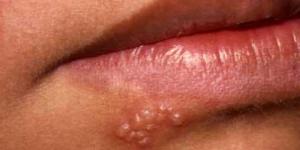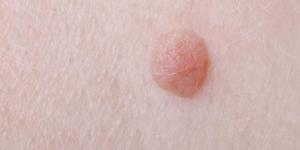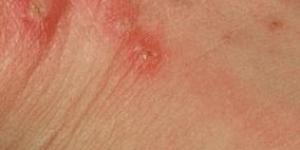How to Treat a Blood Blister


Blood blisters are red fluid-filled bumps under the skin. When a mild injury is sustained, such as a pinch, blood is released from the blood vessels and forms a fluid filled sac. The best way to prevent blood blisters is to lower the risk of knocking parts of your body against objects.
For instance, wear shoes or socks and keep your feet hydrated and dry, prevent irritations by not using harsh chemicals on your skin, and prevent infections by washing your hands frequently and not touching sores or cuts on other people's skin. If you already have a blood blister, though, stay with us at oneHOWTO and find out how to treat a blood blister safely.
Steps to follow:
As soon as a blood blister appears, apply cold to the area. A good method to treat a blood blister is to put ice in a towel and rest it on your blister. Don't leave it on for more than ten minutes. By applying the wrapped ice, you'll reduce blood flow. The blood vessels will contract and the blister will become significantly smaller.
Repeat this process twice or three times, but remember to take a break of around five to ten minutes between applications. You must do your best to avoid cutting off blood supply and prevent frostbite.
You can also reduce the size of the blood blister by elevating the affected limb above the level of your heart. This will encourage blood flow back to the heart and prevent the blood from pooling in the affected limb.
Don't burst a blister. The skin forms a protective layer against infections. If you break this barrier, the risk of infection increases. Therefore, fight the urge to pick at your blister. The blood in the blister will be reabsorbed by the body and won't give you any more problems.
Simply keep the area clean and avoid applying pressure to the blister.
If the blister bursts, disinfect the area immediately. If you can, use local antiseptic or liquid ointment. If you don't have access to these, wash the area thoroughly with soap and water, and let the blood drain.
Then, dry well and cover it with sterile gauze or a clean bandage. Never remove the skin that's left over from the blister, or cut it: the more skin, the more protection given to the affected area and the quicker the blister will heal.
The skin will regenerate in a few days. Keep an eye out for signs of infection such as:
- Heat: You may notice that the area is significantly warmer than surrounding skin.
- Color: The blistered area may become red red.
- Growth: The blister may grow larger and become inflamed.
- Pain.
A combination of the above is indicative of an infection. If you are experiencing these symptoms, seek medical attention to be prescribed oral or topical antibiotics to treat the blood blister and get rid of the infection.
These are our tips on how to treat a blood blister. If you have experience dealing with one, please tell us in the comments section.
This article is merely informative, oneHOWTO does not have the authority to prescribe any medical treatments or create a diagnosis. We invite you to visit your doctor if you have any type of condition or pain.
If you want to read similar articles to How to Treat a Blood Blister, we recommend you visit our Diseases & secondary effects category.





